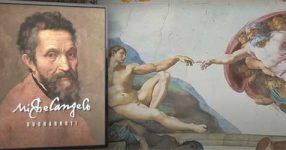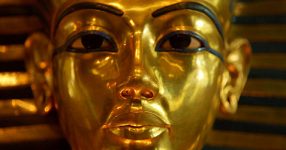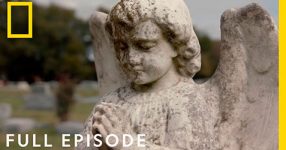In Rome, on April 6, 1520, the acclaimed painter Raphael passed away, leaving behind a profound impact on the art world. At the young age of 37, his death, occurring on Good Friday, drew parallels to Christ’s demise. Stories of supernatural occurrences surrounded his passing, reinforcing the notion of Raphael as a mortal god. The documentary “Raphael: A Mortal God” explores the enduring influence of Raphael’s works, particularly focusing on his masterpiece, the Sistine Madonna, hanging in Dresden’s Old Masters picture gallery for over 260 years.
Sistine Madonna: A Divine Masterpiece
The Sistine Madonna, commissioned in Rome in 1512, stands as a testament to Raphael’s artistic brilliance. This iconic painting showcases Mary and the infant Jesus descending from the heavens, challenging traditional representations. The depiction of lounging angels, rather than engaging in sacred activities, adds an innovative touch. The documentary delves into the global recognition of these angels, even becoming souvenirs, highlighting the international fame of Raphael’s creation.
Raphael’s ability to capture the ideal of perfect balance and beauty in the Sistine Madonna is explored. The painting not only exemplifies theological excellence but also portrays Mary as a self-determined being, symbolizing the spirit of humanism. The unique composition, with angels in repose, sets the Sistine Madonna apart as a powerful and emotionally resonant image.
Raphael: The Social Genius
Giorgio Vasari’s biographical account describes Raphael as more than a mere mortal, endowed with heavenly gifts. Unlike contemporaries like Michelangelo and Leonardo, Raphael was not only an artistic genius but also a social genius. His early years in Florence, where he encountered works like the Mona Lisa and Michelangelo’s David, influenced his artistic development. Raphael’s ability to absorb and adapt from the artists around him marked the beginning of his distinctive style.
Raphael’s Florentine period, particularly his drawing of Leda, reveals his willingness to learn from the great artists of his time. The documentary emphasizes Raphael’s curiosity, ambition, and his role in shaping his unique artistic identity during this crucial phase.
Raphael in Rome: The Rivalry with Michelangelo
The rivalry between Raphael and Michelangelo unfolds during their time in Rome. Pope Julius II, recognizing Raphael’s ability to finish works quickly and reliably, commissioned him for projects alongside Michelangelo. The competitive spirit led to a public display of fresco painting techniques, with Michelangelo’s distrust preventing any access to his ongoing masterpiece on the Sistine Chapel ceiling. The contrast in their approaches, corrections, and behavior in the artistic community becomes a focal point.
Raphael’s contributions to the Vatican’s artistic endeavors, including overseeing archaeological excavations and work on St. Peter’s Basilica, reveal his multifaceted role beyond painting. The documentary sheds light on Raphael’s collaboration with the Pope and his efforts to celebrate the revival of art, philosophy, and architecture in 16th-century Rome.
Eros and Raphael: Villa Farnesina and Personal Life
Raphael’s connection with Villa Farnesina and his personal life, particularly his love for women, add a human dimension to the documentary. His dedication to celebrating the eroticization of the body and female beauty at Villa Farnesina is explored. The narrative delves into Raphael’s romantic relationships, including the presence of his mistress in the villa, showcasing a side of the artist that goes beyond his public image.
Raphael’s artistic process, inspired by real models and his fascination with beauty, is discussed. The connection between Raphael’s personal life and his artistic creations, especially the magic in the faces of his Madonnas, is examined. The artist’s love for women and beauty becomes a central theme in understanding his motivation and inspiration.
The Sistine Madonna in Dresden: Fame and Mystique
The documentary unfolds the journey of the Sistine Madonna, commissioned by Pope Julius II in 1512, and its eventual place in Dresden. The painting gained immense popularity in the 19th century, becoming a symbol of German Romanticism. The Saxon picture gallery in Dresden, designed by architect Gottfried Semper, became its permanent home, attracting admirers and enthusiasts.
Raphael’s early death at the age of 37 added to the mystique surrounding him. The bones of the genius were even exhumed in 1833, with art students hoping for divine inspiration by touching his skull. The Sistine Madonna’s presence in Dresden sparked a cultural phenomenon, with even pop artist Andy Warhol incorporating it into modern art, challenging traditional notions of artistic value.
“Raphael: A Mortal God” provides a comprehensive exploration of Raphael’s life, art, and enduring legacy, focusing on the immortal masterpiece, the Sistine Madonna, and its impact on art history and popular culture.












